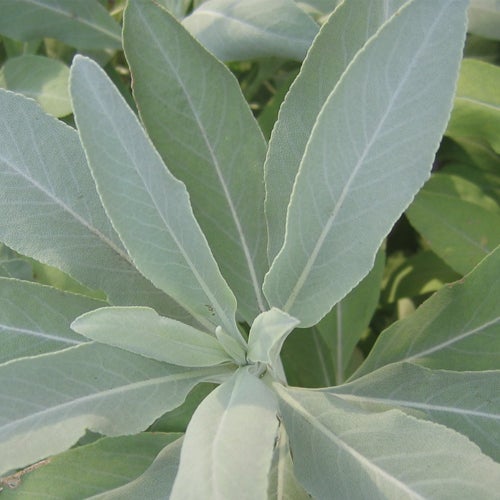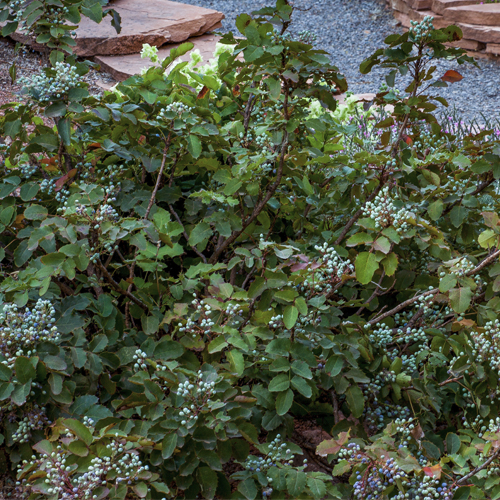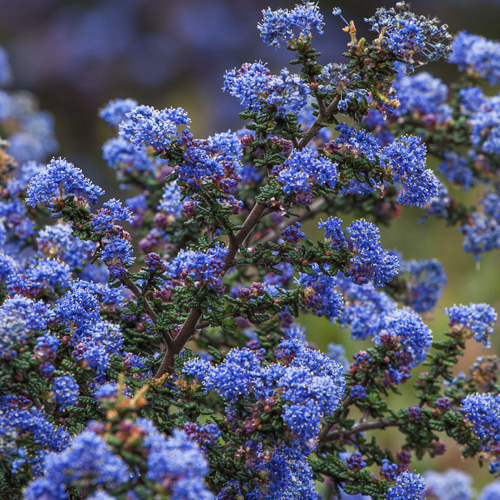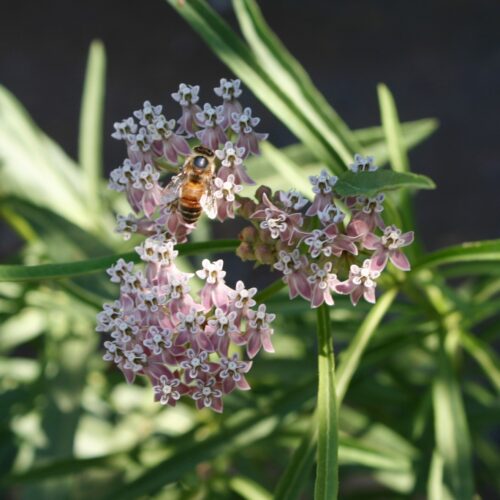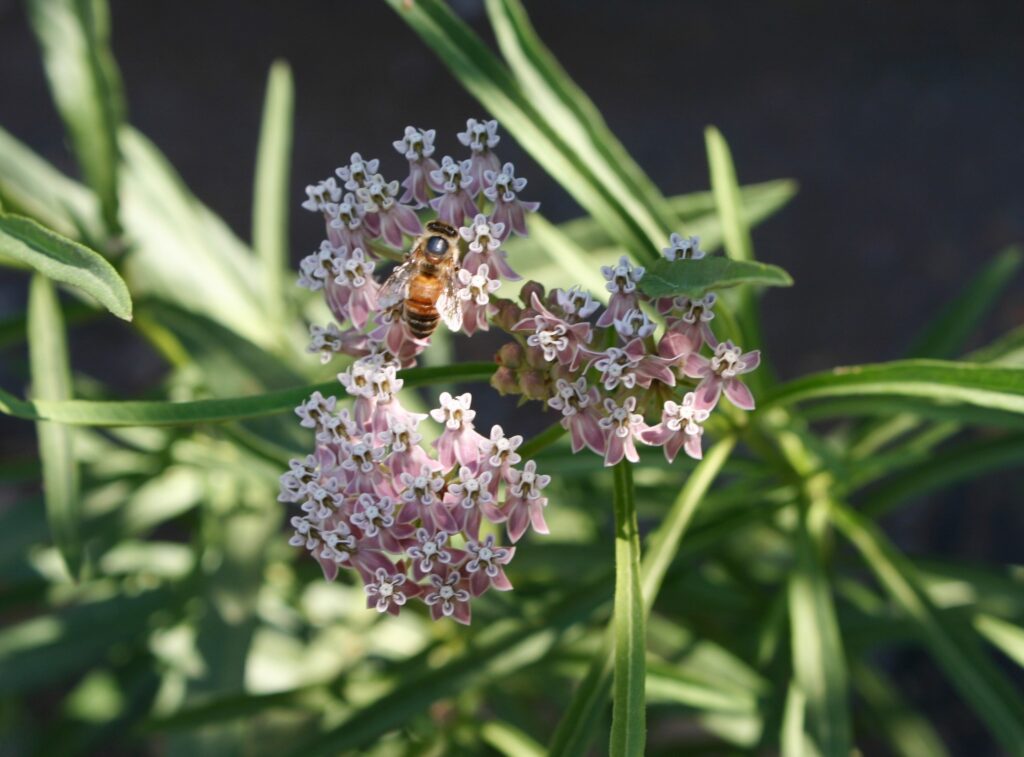Charlotte T’s Habitat Garden
BACK TO FULL TOUR
Garden Features
Drought Tolerant
Edible Garden
California Natives
Drip Irrigation
Pesticide Free
Rainwater Harvesting System
Reclaimed/Recycled Materials
Sheet Mulching
Lawn Conversion
Lawn-Free Landscaping
Wildlife Habitat
This is a naturalist’s garden; where life itself creates conditions conducive to still more life! As such the garden is ever-changing, and the gardener simply assumes the role of a skilled editor.
The garden is large and ever expanding to accommodate new habitat zones, an expanding plant palette, and more water features. Strategic seating areas have been created to allow observation of all the activity in the garden. With over 45 different species and cultivars of Salvia, this garden is sure to impress!
Many of the plants growing in this garden, including trees and shrubs, were started by seed or cuttings, and grown on in a unique home nursery operation.
Wildlife
The garden is alive with birds and butterflies, native bees and beneficial insects, lizards and Pacific tree frogs. Larval host plants are provided for about nineteen species of butterflies; food, water, cover and nesting sites are provided for more than thirty-six species of birds that live here throughout the year. Nesting boxes, placed within the garden and nearby woodlands, have been home to broods of Oak Titmice, Bewick’s Wrens, Chickadees, White-breasted Nuthatches, and Western Screech Owls. Barn Owls are in residence again, and fledged a large brood last summer.
The garden is sited in an Oak Woodland next to open space, so great care has been taken to avoid invasive plant species. Deer and lots of other free roaming wildlife are at home on our hillside, and visit the garden regularly. The deer-resistant ornamental front border is planted with a mixture of California native plants, grasses, and drought tolerant Mediterranean species. The food garden in back is the only area fenced in.
The boulders, dry-stack stone walls, and permeable gravel pathways create a heat sink, as well as offering shelter for all sorts of small creatures. Irregular stone surfaces make shallow pools of water available to wildlife; water is also provided in the form of bird baths, weeping stones and seeps, and several small ponds.
Native Plants & Organic Gardening
‘California Natives Live Here’ and the garden is also ‘Bay-Friendly’ and a Pesticide-Free-Zone; only sustainable, organic gardening methods are used. Drip irrigation systems are used in some areas, in many other areas established native plants get no additional summer water. Mulch or compost is applied each year to beds and borders; other prunings are used to create extensive brush piles.
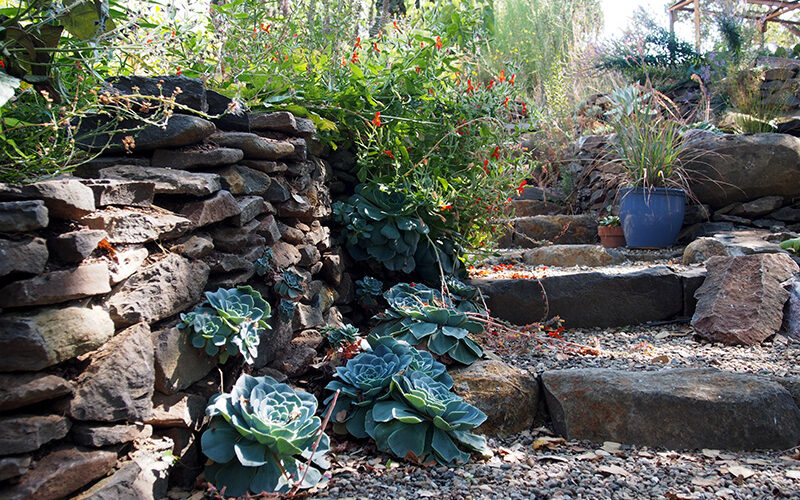
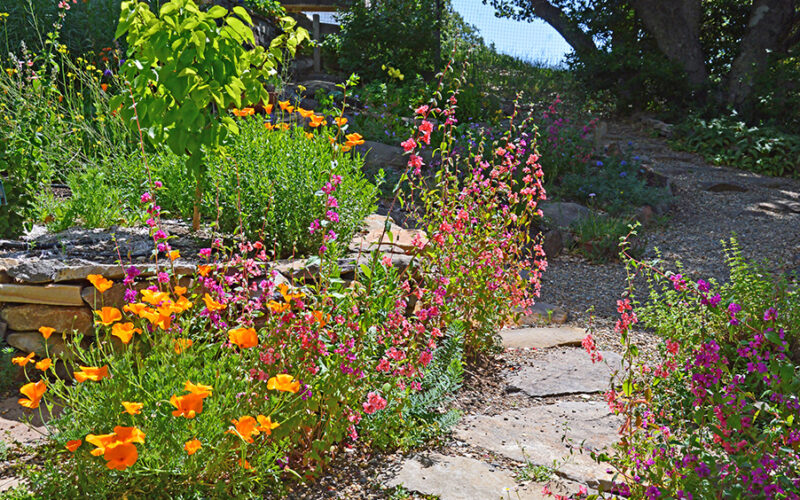
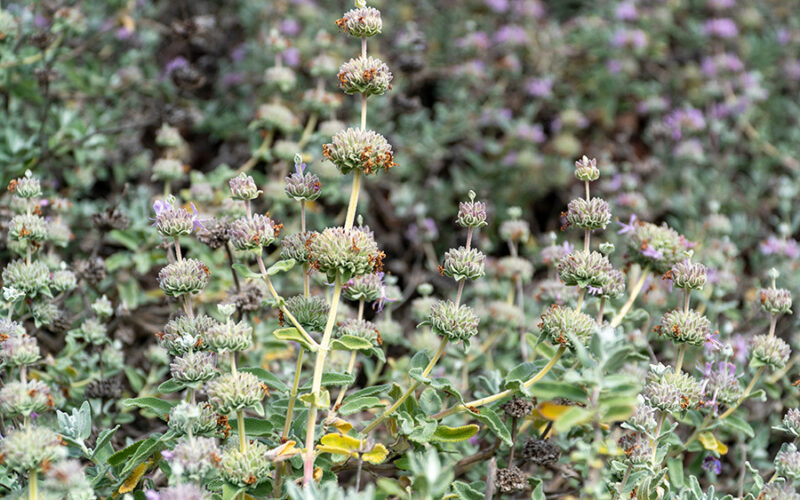
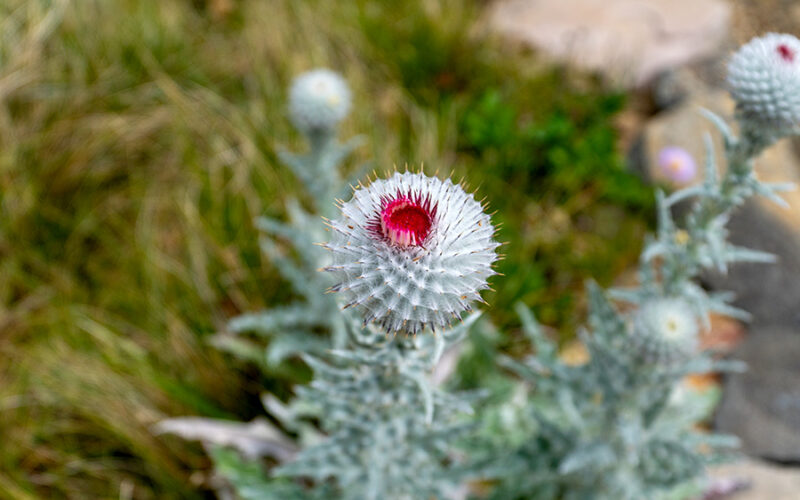
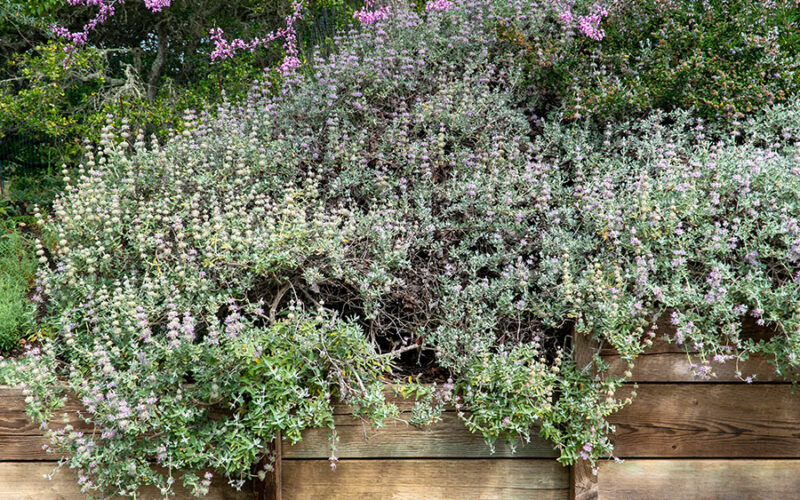
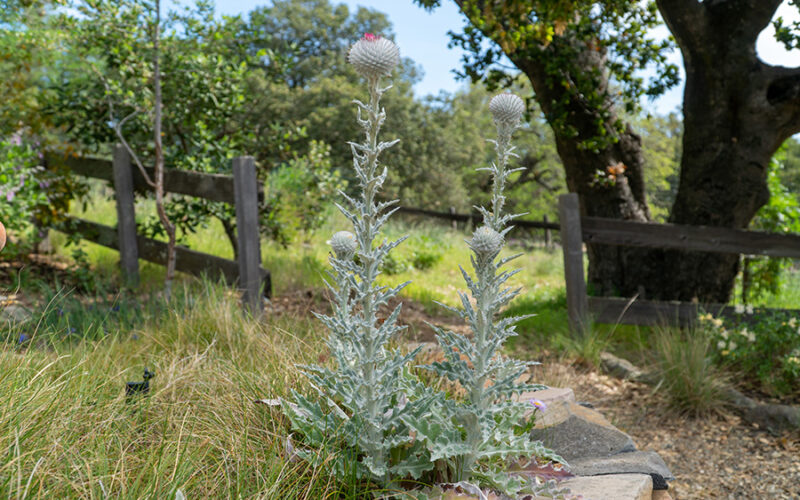
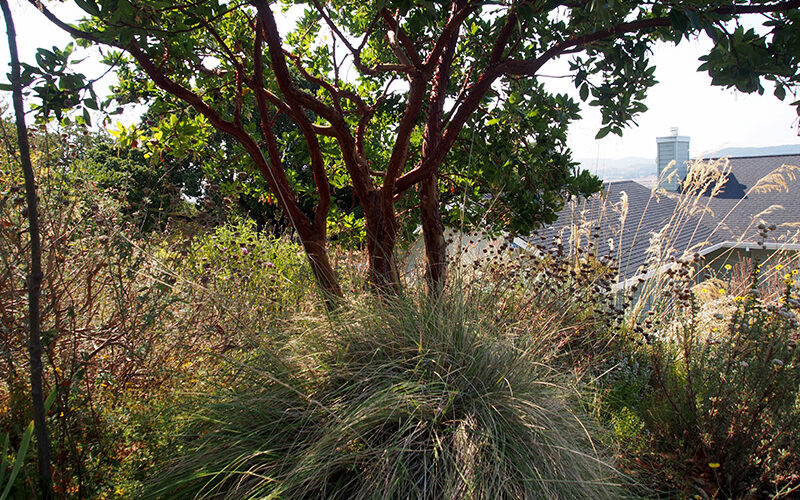
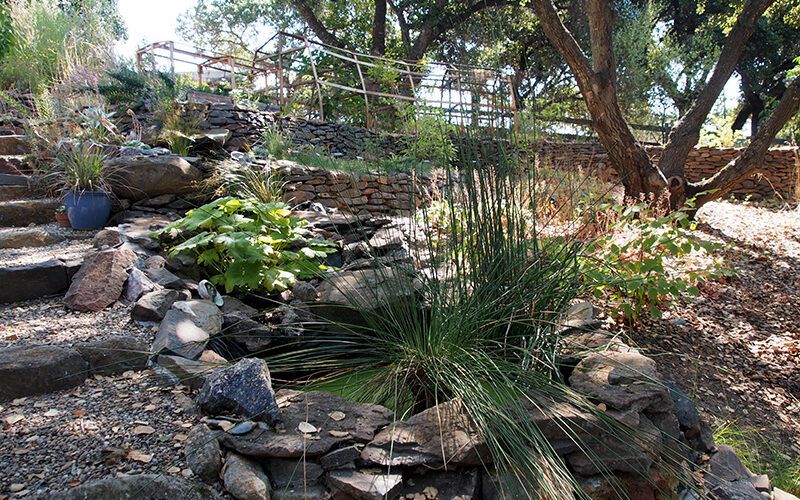
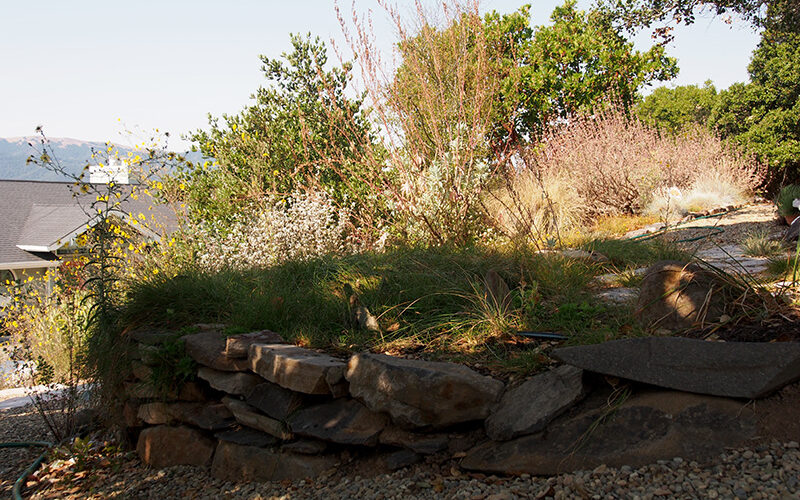
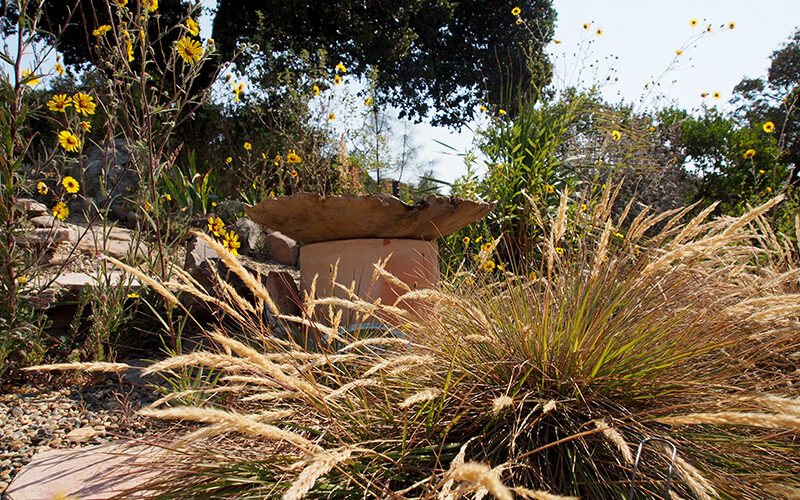
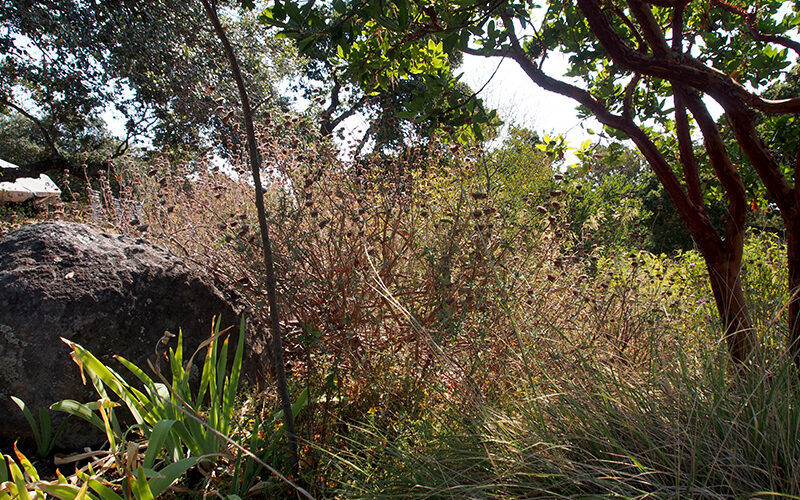
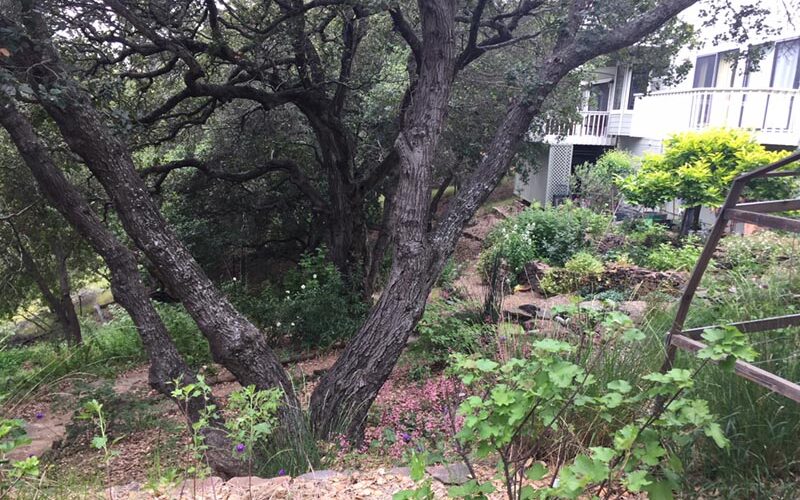
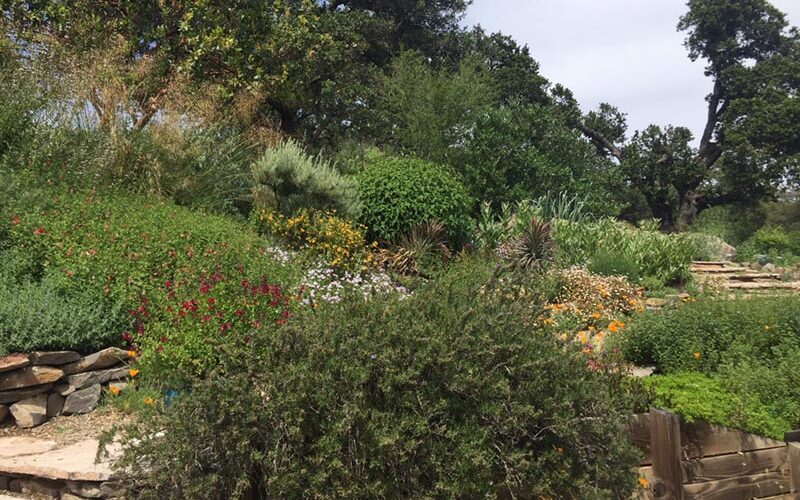
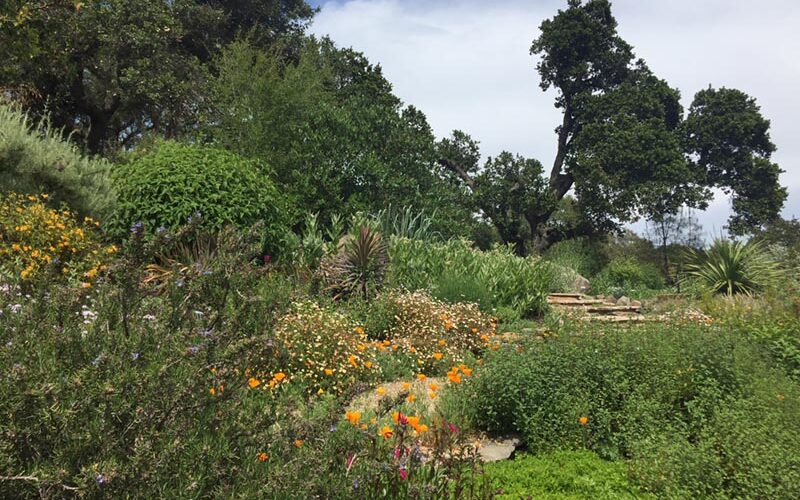
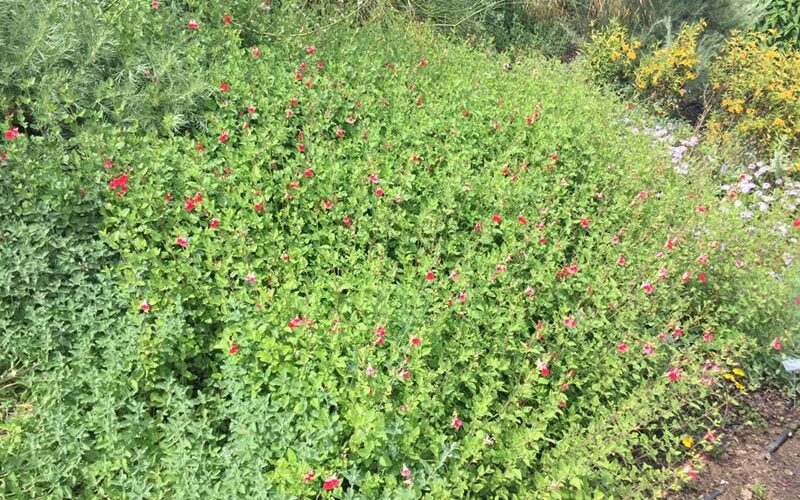
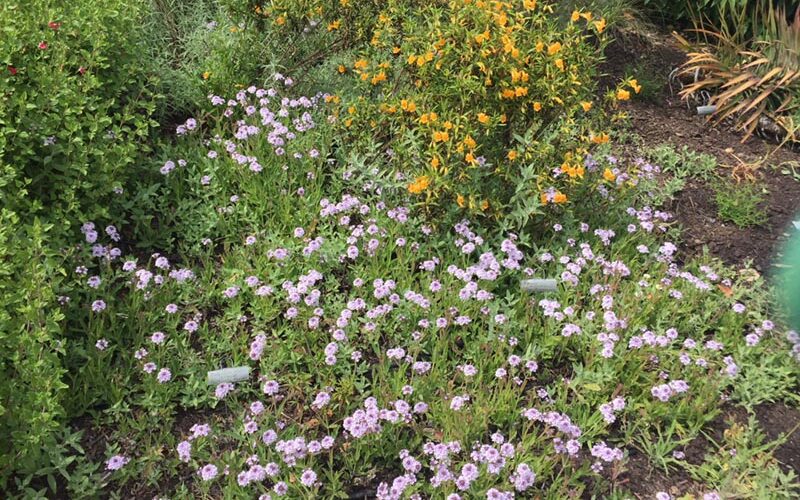
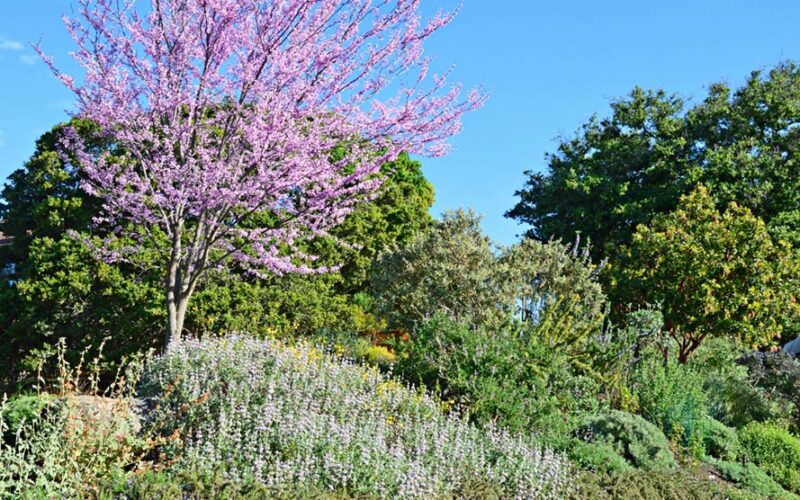
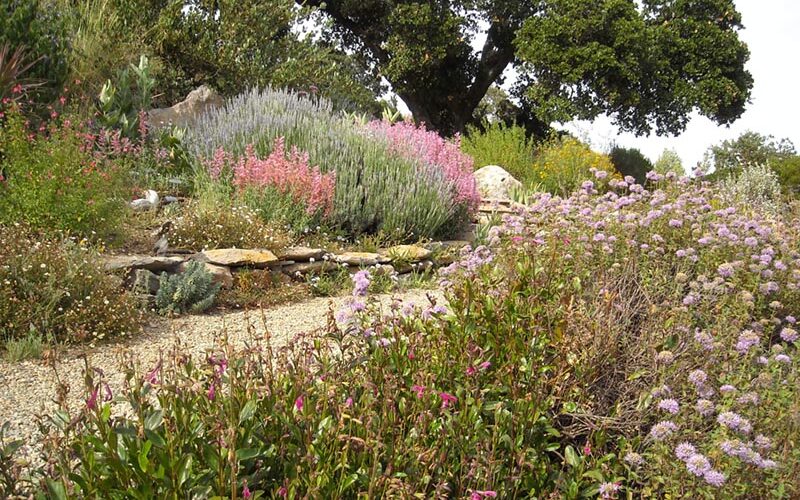
Plants in this Garden
More Favorites
- Ghost Pine (Pinus sabiana)
- Mt. Mahogany (Cercocarpus betuloides)
- Fragrant Pitcher Sage (Lepechinia fragrans)
- Desert Willow (Chilopsis linearis)
- Bush Mallow (Malacothamnus fremontii)
- Pink Flowering Currant (Ribes sanguineum var. glutinosum)
- Golden Currant (Ribes aureum)
- Sacred Datura (Datura wrightii)
- Cobweb Thistle (Cirsium occidentale)
- Pacific Coast Iris – a collection
- Sticky Monkeyflower (Diplacus aurantiacus) and hybrids – a collection
